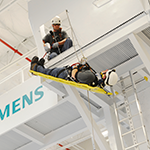Step one: start from the middle. At least, that was the approach of Fischer Homes, the largest builder, landowner, and developer in the greater Cincinnati area, when it took over the Thorpe Creek community in Fishers, Indiana, northeast of Indianapolis. The firm adopted Thorpe Creek from another developer that closed its offices midproject because of economic hardship, and by taking control of the neighborhood and shaping it, Fischer Homes was able to seize a larger opportunity for long-term growth in a new region.
“Even though it’s not a community that we started from a piece of farm ground, we [were still able to] take over, dive in, and really adopt the community as if it were one of our own,” says Brad Kriner, Fischer Homes’ Indianapolis division president. However, in completing the project, Kriner and Fischer Homes felt a need to respect the vision of not only the previous developers but also the homeowners that were already living in Thorpe Creek—a customer-centric effort in keeping with the company’s foundational philosophies.

“Even though it’s not a community that we started from a piece of farm ground, we [were still able to] take over, dive in, and really adopt the community as if it were one of our own.”
—Brad Kriner, Indianapolis Division President
Formed in 1980 by husband and wife Henry and Elaine Fischer, the hybrid custom-home builder and property developer started with the modest goal of building roughly 100 quality homes a year. Then, in 2008, it began expansion into other Ohio markets. It was Tim McMahon, now president and COO of Fischer Homes, who spearheaded the creation of the company’s Indianapolis division in 2009, working directly with members of the Fischer family to plan their expansion there and in other Midwestern cities. The company decided that the recession offered a perfect opportunity to build a new team and enter a weakened market only two hours away from its headquarters.

(Photo: Bradley Hernandez)
Company chairman of the board Henry Fischer, an engineer by trade, is committed to flexible design and value engineering, and Fischer Homes as an organization seeks business flexibility as well, largely through diversity. As a high-volume builder, the firm serves entry-level and luxury homebuyers alike, and it has not only a development arm but an investment arm as well. This allows Fischer Homes to acquire raw ground and set up communities from scratch when it needs to.
In January 2010, the firm opened its Indianapolis division and zeroed in on vacant developed lots, working with local developers and banks to gain a foothold. The acquisition of Thorpe Creek was initially just meant to help Fischer Homes reach its short-term growth goals, but it became a longer-term project when the opportunity arose to pick up the whole development and shape the surrounding community. More than 200 homes were planned for the site, and 50 were already built by the time Fischer Homes took control, so meeting the existing homeowners’ expectations while trying to entice new buyers—and still marry a new vision for the development with the previous one—was difficult, requiring every ounce of the firm’s flexibility.
“Not all property that you [can] acquire can be made to work, but this one fit all the criteria: our product, our understanding of the market, and our understanding of the costs of developing this community,” Kriner says. Fischer Homes applied its expertise to the design of streets and to the variation of home plans, entrances, corner lots, and other visible neighborhood elements.

a community center and other amenities at Thorpe Creek right away to raise interest. (Photo: Bradley Hernandez)
Thorpe Creek’s previous developers had been waiting to meet a certain number of built homes before completing the neighborhood’s amenities, but Fischer Homes prioritized and fast-tracked an in-ground pool, a basketball court, a park, and a community center over the construction of new homes, enlivening the site and making it more enticing. Then, by controlling prices, the firm was able to help the market recover more quickly.
The area’s early homeowners were at first wary of partnering with a developer they had not chosen, but Fischer Homes won them over, and today, after three and half years in Indianapolis, the company boasts a 99.6 percent customer-satisfaction rate. “I almost don’t even talk about [the rate] because it sounds inflated,” Kriner says. “We have only had one customer who wouldn’t recommend us to friends or family at closing.”
Now in its fourth year in Indianapolis, Fischer Homes has expanded into 29 local communities around the city, and it’s poised to keep growing. The firm may not have started from scratch in Indianapolis, but because of its flexibility and diversity, it was able to execute a vision that both it and its customers were happy with—thus proving that it’s not how you start; it’s how you finish.






